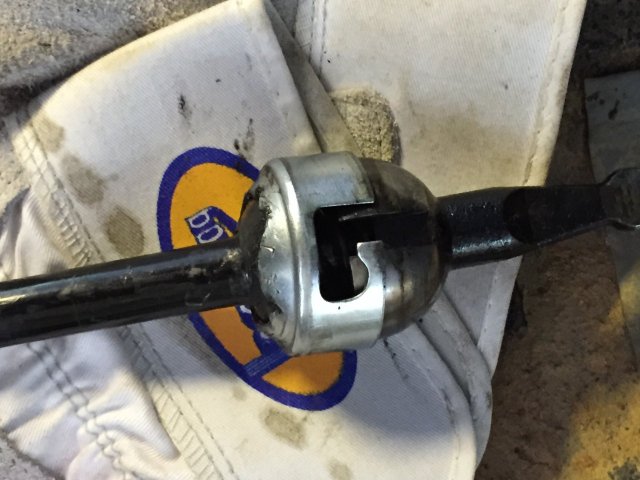- Thread starter
- #81
I did some reading on a number of forums (e.g. Mud, a Corvette thread, and a Chevelle thead...apparently, these guys change R&P more often than we do!) and gleaned the following useful information, especially with some comments from one of the gear manufacturer reps. I made two mistakes in my solid spacer setup: (1) problems are created when using shims from different manufacturers...I used an OEM (metric?) pinion-depth shim (Nitro didn't mention this in their installation instructions) and a Nitro solid-spacer shim (SAE?) under the spacer; and (2) I tried to use a Nitro spacer between the spacer and the bearing to match the OEM spacer located under the inner pinion bearing race. The OEM shim is 0.45 mm (~0.018"), which I compensated for with a Nitro 0.02" shim, which is too thick; I would never get the preload right! Nitro said to start with the original setup...LOL.
I will be placing the Nitro shims between the pinion bearing and pinion gear. This means solving the problem of removing the pinion bearing without damaging it (one forum user suggested using the old bearing for these adjustments but I think mine may be too worn to really work). The HF bearing pulling tool will never work. I saw images of these bending in the act of removing (maybe yes, maybe no) bearings; I got the HF large-bearing separator (cost ~$16) but it has a lip that is about 3/16" that would never fit between the bearing and pinion gear. I ground it down (it is really soft metal) until it would drive the bearing off while not binding on the bearings themselves.

This photo shows my estimated wedge and how it bound up at the outer diameter of the inner race. However, I was able to remove the bearing without binding the outer cage or rollers in the press.

The pinion gear dropped into a box filled with packing material (no damage) but the bearing stuck in the soft separator metal! I will fine tune the outer edges to make it more robust for repeated use (I still need to do the rear...LOL).

Time for a delay waiting for the GM gear marker...
I will be placing the Nitro shims between the pinion bearing and pinion gear. This means solving the problem of removing the pinion bearing without damaging it (one forum user suggested using the old bearing for these adjustments but I think mine may be too worn to really work). The HF bearing pulling tool will never work. I saw images of these bending in the act of removing (maybe yes, maybe no) bearings; I got the HF large-bearing separator (cost ~$16) but it has a lip that is about 3/16" that would never fit between the bearing and pinion gear. I ground it down (it is really soft metal) until it would drive the bearing off while not binding on the bearings themselves.

This photo shows my estimated wedge and how it bound up at the outer diameter of the inner race. However, I was able to remove the bearing without binding the outer cage or rollers in the press.

The pinion gear dropped into a box filled with packing material (no damage) but the bearing stuck in the soft separator metal! I will fine tune the outer edges to make it more robust for repeated use (I still need to do the rear...LOL).

Time for a delay waiting for the GM gear marker...
Last edited:



































